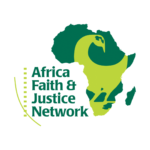With the renewed violence in eastern Democratic Republic of the Congo, the number of victims continues to rise and hundreds of thousands of people have been displaced. On November 6th in Kiwanja, civilians were massacred by Laurent Nkunda and Rwandan troops in retaliation to an attempt by the Congolese armed resistance group commonly known as Mai Mai to draw Nkunda’s men out of Kiwanja.
Mr. Alan Doss, the special envoy of the United Nations’ secretary general and top leader of the United Nations’ peace keeping mission in the Congo (MONUC) confirmed the Kiwanja massacre in an interview given to the local radio channel, Radio Okapi and promised to release a related report very soon. Regarding MONUC’s work in the Congo, Africa Faith and Justice Network’s contact in North Kivu said that the Congolese people feel that “talking about Nkunda’s crimes without arresting him is useless. Had the level of crimes been the way to get international support, the crisis in the Congowould have been over by now.”
About six million people have lost their lives in the Congo since Rwanda first invaded the Congo in 1996. The international community and many analysts continue to wrongly address the Congo crisis as primarily a Congolese internal problem instead of recognizing that it is and has been mainly a conflict between Rwanda and Congo. Their disagreements are over the presence of the Rwandan Hutu rebel group, the Democratic Forces for the Liberation of Rwanda (FDLR), in eastern Congo since 1994, Rwanda’s access to Congolese natural resources, and the Rwandan government’s military support of the Congolese rebel group the National Congress of the Defense of the People (CNDP).
The War: A Step Backwards in the Democratic Process in Congo
This third Rwandan invasion of the Congo in partnership with CNDP sets back the clock of democracy established on December 6th, 2006 by the Congolese people when they democratically elected a president after thirty-two years of dictatorship, twelve years of a bloody war, and a long transitional government (July 2003-December 2006). This war undermines the government’s internal peace initiatives in eastern Congo such as the Act of Disengagement signed on January 23rd, 2007 in Goma between the government and twenty-two armed groups. The implementation of the Act has been conducted under the umbrella of the Amani program. Furthermore, the international community, aware of the conflict between Congo and Rwanda, got the two nations to sign the Nairobi Accord on November 9th, 2007. The Accord deals with peace, security, and stability between the two nations. It demands that the Congolese government disarm the FDLR, and suggests that the Rwandan government stop supporting CNDP led by Laurent Nkunda, a former soldier in the Rwandan army.
Understanding CNDP and FDLR
The Rwandan connection to CNDP and FDLR explains the most important political aspect of this crisis. The FDLR is a Rwandan Hutu rebel group operating in eastern Congo whose desire is to go back to Rwanda and regain the power they lost to the current Tutsi regime of Rwanda after the 1994 genocide. The Rwandan government accuses its Congolese counterpart of supporting the FDLR instead of turning them in to be judged for genocide crimes in Rwanda.
The CNDP is a Tutsi rebel group led by Laurent Nkunda whose mission is to protect the Congolese Tutsi community from the FDLR and to thereby gain control over Congo’s natural resources. Nkunda’s financial support comes from Rwandan businessmen and natural resource sales. He is also militarily assisted by the Rwanda government and recruits his soldiers from the Tutsi community in Rwanda, Burundi, and the Congolese refugee camps inRwanda. He also recruits inside Congo by forces in territories he controls. In several interviews, one with the British Broadcast Corporation (BBC) in early November 2008, Nkunda said that his mission is no longer to protect only the Congolese Tutsi community, but also all the Congolese oppressed by the Congolese government.
Other Layers to the Congo-Rwanda Crisis
Because the reasons why Rwanda invaded the Congo remain unsolved, theCongo has yet to be pacified 12 years later. If the issues were only internal toCongo, the crisis would not be of this magnitude. This war is also about the enormous natural resource deposits in the Kivus, wanted by many developed nations around the world to support the electronic industry. Congo holds approximately eighty percent of the world’s coltan, vast stores of the world’s tin, and other important minerals such as uranium, copper, and gold. Rebel groups often sell Congo’s natural resources to mining companies or electronics manufacturers in Rwanda, Burundi, and Uganda. These bloody minerals are then used in nearly every cell phone, video game system, and laptop computer sold around the world.
Also, this war is about political influence. For example, the United States, under President George Bush, continues to train and equip the Rwandan National Army despite its invasion of the Congo. This military program has allowed Rwanda to become a major player in the region and boosts USinfluence and interests against the Chinese and Europeans in Central Africa. The US policies in Rwanda are similar in vision and purpose, albeit on a smaller scale, to those of the US and Israel in the Middle East. As such, the crisis will be difficult to end with one political maneuver and will require investments by all parties to ensure the safety of the Congolese.
By Bahati Ntama Jacques
